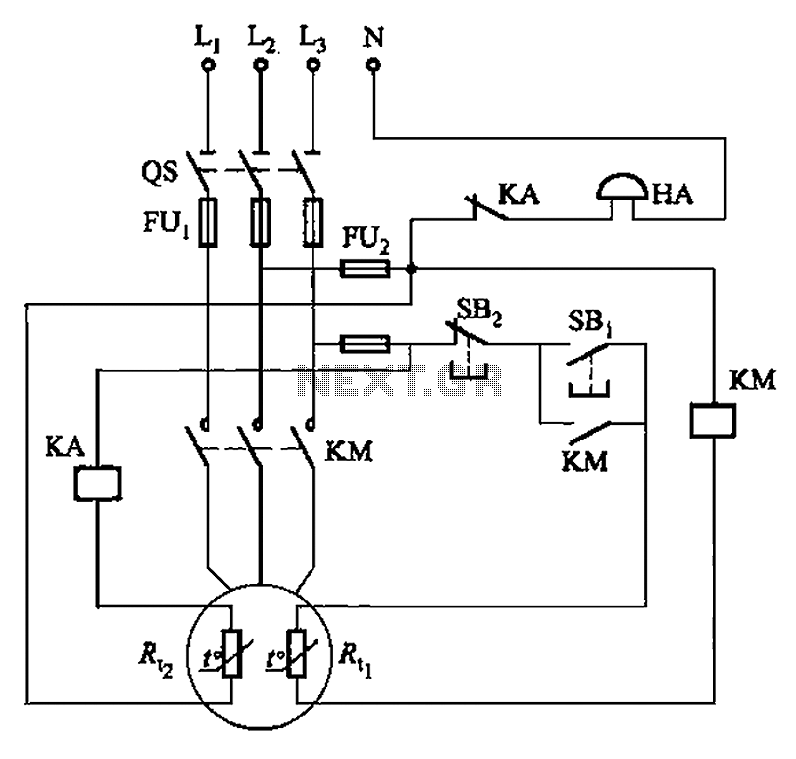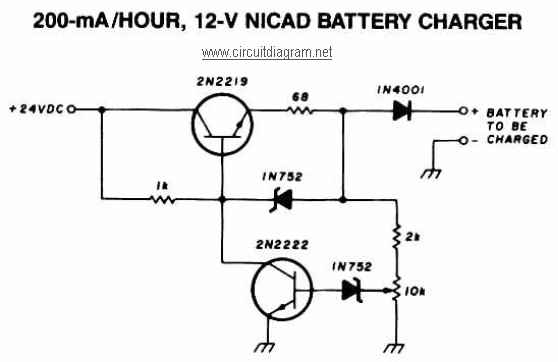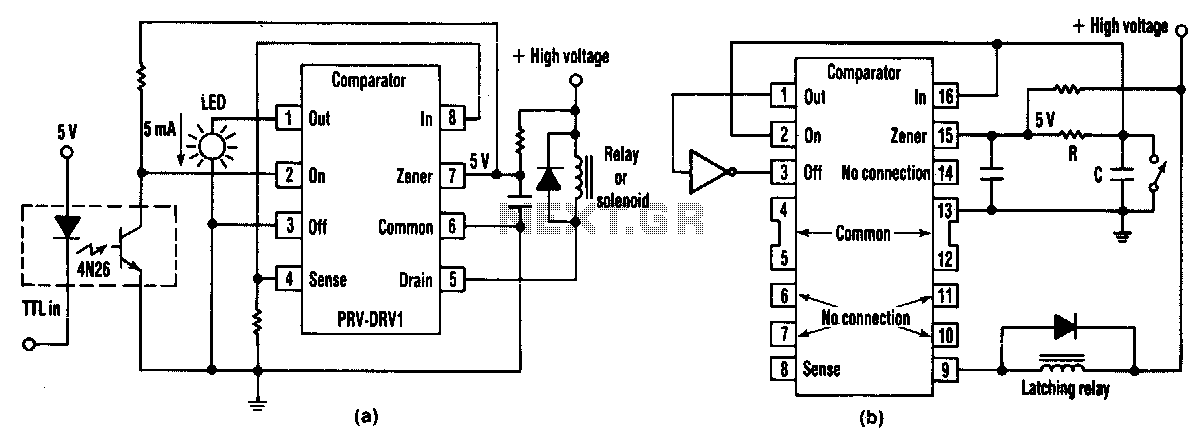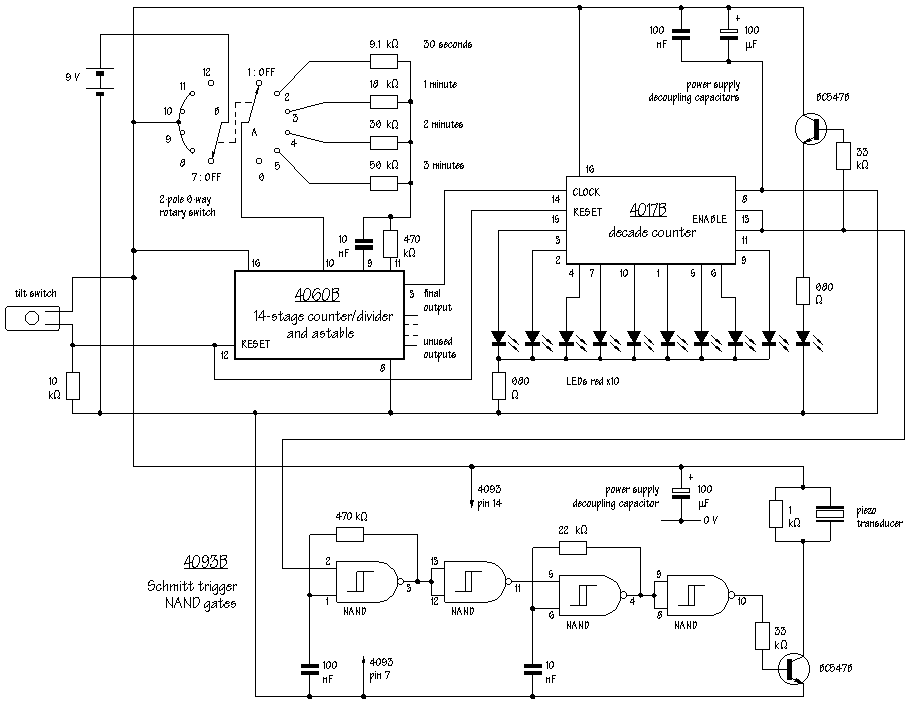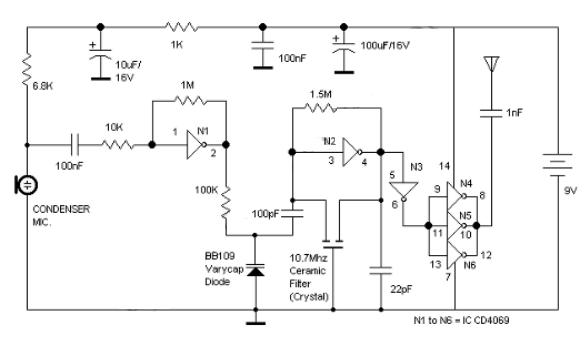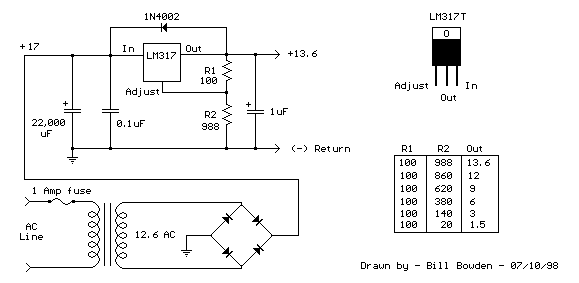
It uses NAND gate transistor and humidity control circuit
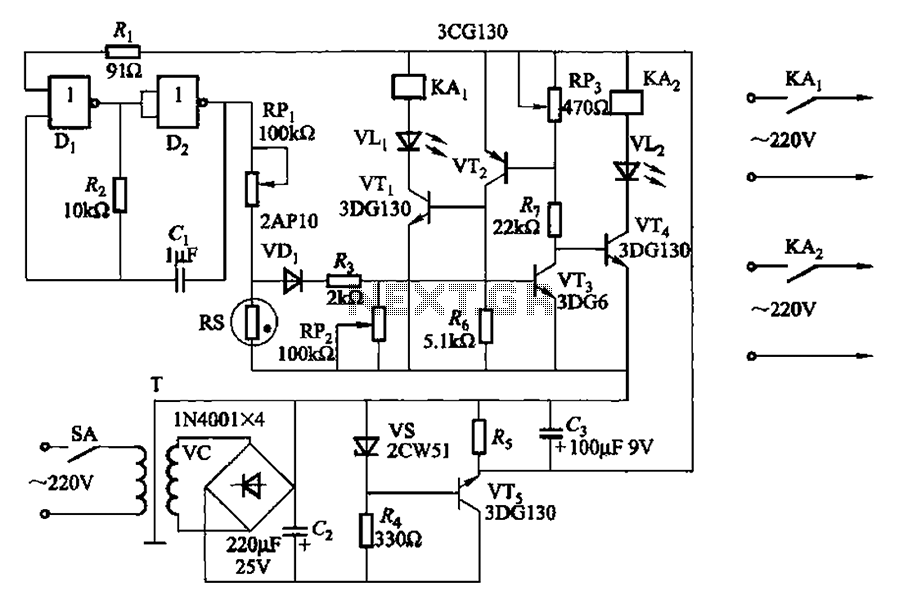
Two NAND gates (Di, Dz) and a resistor (Rz) along with capacitors (C1, etc.) form an RC self-excited multivibrator with an oscillation frequency of 2.5 Hz and an oscillation amplitude of 4 V. This circuit is used as a probe for temperature and humidity, utilizing a resistance element (RS). The circuit is controlled by transistors (VT1 ~ VT4). When the humidity drops to the preset value (adjusted by potentiometer RPi), relay KA2 releases, cutting off the power supply to the dryer. Simultaneously, relay KA1 activates, turning off the humidifier. When humidity increases, the resistance of RS decreases, and when the humidity reaches the set value, KA2 activates, repeating the process to maintain indoor humidity around the desired level.
The described circuit utilizes two NAND gates configured to create a self-oscillating multivibrator. The oscillation frequency of 2.5 Hz is determined by the time constants of the resistors and capacitors in the circuit, specifically through Rz and the capacitors (C1, etc.). The output of this multivibrator generates a square wave signal with an amplitude of 4 V, which can be used to trigger further actions in the humidity control system.
The humidity control mechanism is based on the resistance changes in the humidity sensor element (RS). This sensor's resistance decreases as humidity increases, providing a feedback mechanism to the control circuit. The transistors (VT1 to VT4) are used to amplify the control signals from the NAND gates, allowing the circuit to control the relays effectively.
Relay KA2 is responsible for disconnecting the dryer when the humidity falls below the set threshold. The potentiometer (RPi) allows for fine-tuning of this threshold, enabling the user to adjust the desired humidity level. When humidity levels rise sufficiently, relay KA1 is activated to turn off the humidifier, preventing over-humidification.
This feedback loop ensures that the indoor environment remains stable and within the desired humidity range. The design is efficient and effective for maintaining optimal humidity levels, making it suitable for various applications, including greenhouses, indoor gardens, or any environment where humidity control is critical. The use of NAND gates and transistors in this circuit showcases a practical application of digital logic in analog control systems. By two NAND gates Di, Dz and resistor Rz, capacitors Cl etc. RC self-excited multivibrator oscillation frequency 2. 5Hz, the oscillation amplitude is 4V. Using as probe tempera ture humidity resistance RS element. VTi ~ VT4 composed by transistors control circuit. When the humidity drops to the set value (adjusted by potentiometer RPi), relay KA2 release, cut off the power supply dryer; at the same time, KAi pull, turn the humidifier off. When the humidity rises, RS resistance decreases when the humidity reaches the set value. KA2 pull, repeat the process, so that the indoor humidity is maintained around the set value.
The described circuit utilizes two NAND gates configured to create a self-oscillating multivibrator. The oscillation frequency of 2.5 Hz is determined by the time constants of the resistors and capacitors in the circuit, specifically through Rz and the capacitors (C1, etc.). The output of this multivibrator generates a square wave signal with an amplitude of 4 V, which can be used to trigger further actions in the humidity control system.
The humidity control mechanism is based on the resistance changes in the humidity sensor element (RS). This sensor's resistance decreases as humidity increases, providing a feedback mechanism to the control circuit. The transistors (VT1 to VT4) are used to amplify the control signals from the NAND gates, allowing the circuit to control the relays effectively.
Relay KA2 is responsible for disconnecting the dryer when the humidity falls below the set threshold. The potentiometer (RPi) allows for fine-tuning of this threshold, enabling the user to adjust the desired humidity level. When humidity levels rise sufficiently, relay KA1 is activated to turn off the humidifier, preventing over-humidification.
This feedback loop ensures that the indoor environment remains stable and within the desired humidity range. The design is efficient and effective for maintaining optimal humidity levels, making it suitable for various applications, including greenhouses, indoor gardens, or any environment where humidity control is critical. The use of NAND gates and transistors in this circuit showcases a practical application of digital logic in analog control systems. By two NAND gates Di, Dz and resistor Rz, capacitors Cl etc. RC self-excited multivibrator oscillation frequency 2. 5Hz, the oscillation amplitude is 4V. Using as probe tempera ture humidity resistance RS element. VTi ~ VT4 composed by transistors control circuit. When the humidity drops to the set value (adjusted by potentiometer RPi), relay KA2 release, cut off the power supply dryer; at the same time, KAi pull, turn the humidifier off. When the humidity rises, RS resistance decreases when the humidity reaches the set value. KA2 pull, repeat the process, so that the indoor humidity is maintained around the set value.
